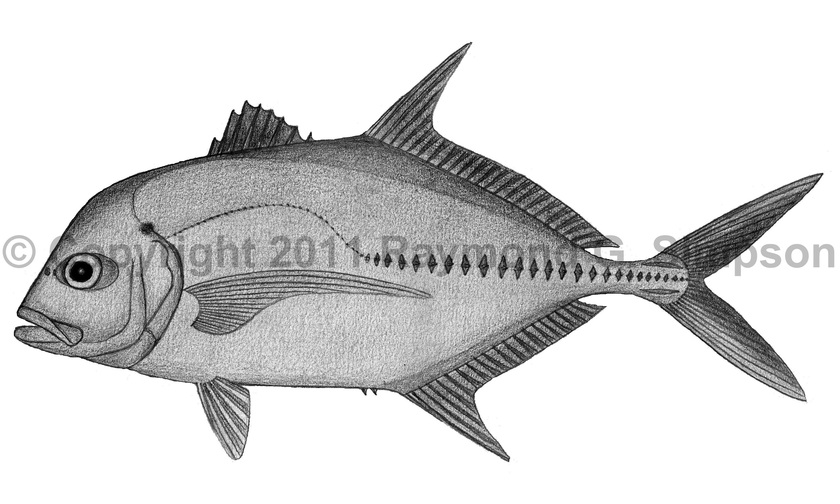
Common Name
Black Jack
Year Described
Poey, 1860
Identification
Dorsal Fin: 8 spines in first lobe, followed by I, 20-23
Anal Fin: 2 spines separate from rest, followed by I, 17-20
Pelvic Fin: I, 5
Gill Rakers: 6-8 upper, 18-21 lower
Vertebrae: 10 precaudal, 14 caudal
Elongate, moderately compressed, and deep-bodied, with a large head, blunt snout, and a large eye (4.0-4.9 times in HL). Frontal head profile very steep. Adipose eyelid strong. Snout short; jaw reaches middle of eye. Teeth in two row in the upper jaw (with strong canines) and a single row in the lower jaw. Pectoral fins falcate, longer than head. Spiny dorsal fin lower than lobe of second dorsal fin. Anterior lobe of second dorsal and anal fin highly elongate (especially larger specimens). Tail deeply forked. Lateral line with a strong anterior arch and a straight posterior portion with 26-32 scutes. Small cycloid scales on entire body, including entire chest. Bilateral caudal keels present. Hyperostosis absent.
Color
Dark coloration ranging from steel gray to dark brown or jet black. Fins black or dark gray, often with paler anterior margins in lighter fish.
Size
Common to 70cm FL. Maximum size to 90cm FL.
Habitat
Pelagic around islands: mostly in deeper waters from 24-65m. Sometimes around reef drop-offs. Rare in shallower water. Sometimes in small schools, but more commonly in pairs or solitary.
Range
Oceanic areas from the central Gulf of Mexico to the Caribbean islands, and off South America to Brazil.
References
Smith-Vaniz, W.F. 2003. Carangidae (pp 1426-1468). In: Carpenter. 2003. The living marine resources of the Western Central Atlantic v. 3.